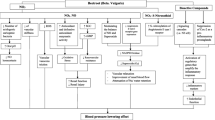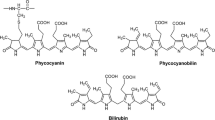Abstract
The paper focuses on certain natural polyphenolic extracts from common elder fruit (Sambucus nigra), and also on their effects in diabetes mellitus. The results reveal that the glycosylated hemoglobin values are much higher in the diabetic group and they are significantly lower in the group protected by polyphenols. The natural polyphenol compounds reduce the lipids peroxides, neutralize the lipid peroxil radicals and inhibit the LDL oxidation. Following the perturbation of the lipid metabolism in the diabetic rats, atherogen risk has significantly increased values in comparison to the rats from the witness groups. It is found that due to the polyphenolic protection of the rats from the diabetic group treated with polyphenols, the atherogen risk is preserved at normal limits. The serum activity of glutathione-peroxidase and superoxide-dismutase has significantly lower values in the diabetic group as compared to the group protected by polyphenols. Through the hypoglycemiant, hypolipemiant and antioxidant effects,Sambucus nigra represents a possible dietary adjunct for the treatment of diabetes and a potential source for the discovery of new orally active agent(s) for future diabetes therapy. Understanding the mechanism through which the natural polyphenols have effects on the functionality of the endothelium cells, including on the membrane sensitivity and intracellular signalling, could represent a new way of therapeutically approaching chronic metabolic diseases and cardiovascular illnesses.
Similar content being viewed by others
References
Abuja, P.M., Murkovic, M., Pfannhauser, W. (1998): Antioxidant and prooxidant activities of elderberry (Sambucus nigra) extract in low-density lipoprotein oxidation.J Agric Food Chem,46, 4091–4096.
Allain, C.C., Poon, L.S., Chan, C.S., Richmond, W., Fu, P.C. (1974): Assay method of cholesterol and triglycerides for clinical use.Clin Chem,20, 470.
Balasundram, N., Sundram, K., Saman, S. (2006): Phenolic compounds in plants and agro-industrial by-products: Antioxidant activity, occurrence and potential uses.Food Chemistry,99, 191–203.
Beutler, E., Durion, O., Kelly, BJ. (1990): Diabetic heart and kidney exhibit increased resistance to lipid peroxidation.Biochem Biophys Acta,1047, 63–69.
Bitsch, I., Janssen, M., Netzel, M. (2004): Bioavailability of anthocyanidin-3-glycosides following consumption of elderberry extract and blackcurrant juice.Int J Clin Pharmacol Ther,42, 293–300.
Cheynier, V. (2005): Polyphenols in foods are more complex than often thought.Am J Clin Nutr,81, 223S-229S.
Ciocoiu, M., Badescu, M., Lupusoru, E.C. (2007): The intervention of antioxidant therapy on platelet adhesion and immunomodulation in experimental physical stress.Free Rad Res,41(7), 829–838.
Curin, Y., Andriantsitohaina, R. (2005): Polyphenols as potential therapeutical agents against cardiovascular diseases.Pharmacol Rep,57 (Suppl), 97–107.
Ganda, O.P., Rossi, A.A., Like, A.A. (1976): Studies on streptozotocin diabetes.Diabetes,25, 595–603.
Gray, A.M., Abdel-Wahab, Y.H., Flatt, P.R. (2000): The traditional plant treatment, Sambucus nigra (elder) exhibits insulin-like and insulin-releasing actionsin vitro.J Nutr,130, 15–20.
Gupta, S., Kataria, M., Gupta, P.K., Murganandan, S., Yashroy, RC. (2004): Protective role of extracts of neem seeds in diabetes caused by streptozotocin in rats.J Ethnopharmacol,90, 185–189.
Kahkonen, M.P., Heinonen, M. (2003): Antioxidant activity of anthocyanins and their aglycons.J Agric Food Chem,51, 628–633.
Kahn, A.H., Pessin, J.E. (2002): Insulin regulation of glucose uptake: a complex interplay of intracellular signalling pathways.Diabetologia,45, 1475–1483.
Lopes-Virella, M.F. (1977): Assay Method of High-Density Lipoproteins for Clinical use,Clin Chem,23(5), 882–884.
Manach, C., Scalbert, A., Morand, C., Remesy, C., Jiménez, L. (2004): Polyphenols: food sources and bioavailability.Am J Clin Nutr,79, 727–747.
Markakis, P. (1982): Anthocyanins as food colours. New York: Academic Press, 181–206.
Marra, G., Cotroneo, P., Pitocco, D., Manto, A., Di Leo, MA., Rutolo, V., Caputo, S., Giardinia, B., Ghirlanda, G., Santini, SA. (2002): Early increase of oxidative stress and reduced antioxidant defenses in patients with uncomplicated type 1 diabetes: a case for gender difference.Diabetes Care,25, 370–375.
Masella, R., Di Benedetto, R., Vari, R., Filesi, C., Giovannini, C. (2005): Novel mechanisms of natural antioxidant compounds in biological systems: involvement of glutathione and glutathione-related enzymes.J Nutr Biochem,16(10), 577–586.
Milbury, P.E., Cao, G., Prior, R.L., Blumberg, J. (2002): Bioavailability of elderberry anthocyanins.Mech Aging Dev,123, 997–1006.
Minami, M., Yoshikawa, A. (1979): Simplified assay method of SOD activity for clinical use.Clin Chim Acta,92(3), 337–342.
Murkovic, M., Abuja, PM., Bergmann, AR. (2004): Effects of elderberry juice on fasting and postprandial serum lipids and low-density lipoprotein oxidation in healthy volunteers: a randomized, double-blind, placebo-controlled study.Eur J Clin Nutr,58, 244–249.
Ozgova, S., Hermanek, J., Gut, I. (2003): Different antioxidant effects of polyphenols on lipid peroxidation and hydroxyl radicals in the NADPH-, Fe-ascorbate-, and Fe-microsomal systems.Biochem Pharmacol,66, 1127–1137.
Prior, R.L. (2003): Fruits and vegetables in the prevention of cellular oxidative damage.Am J Clin Nutr,78, 570S-578S.
Sabu, M.C., Smitha, K., Kuttan, R. (2002): Antidiabetic activity of green tea polyphenols and their role in reducing oxidative stress in experimental diabetes.J Ethnopharmacol,83, 109–116.
Saltiel, A.R., Pessin, J.E. (2002): Insulin signaling pathways in time and space.Trends Cell Biol,12, 65–71.
Sang, S., Hou, Z., Lambert, J.D., Yang, C.S. (2005): Redox properties of tea polyphenols and related biological activities.Antioxid Redox Signal,7, 1704–1714.
Scalbert, A., Manach, C., Morand, C., Remesy, C., Jimenez, L. (2005): Dietary polyphenols and the prevention of diseases.Crit Rev Food Sci Nutr,45, 287–306.
Singleton, V.L., Rossi, J.A. (1965): Colorimetry of total phenolics with phosphomolybdic-phosphotungstic acid reagents.Am J Enol Viticulture,37, 144–158.
Tosca, L.Z., Fernandez, M.L. (2005): Cardioprotective effects of dietary polyphenols.Recent Advances in Nutritional Sciences,135, 2291–2295.
Willcox, J.K., Ash, A.L., Catignani, G.L. (2004): Antioxidants and prevention of chronic disease.Critic Rev Food Sci Nutr,44, 275–295.
Willuhn, G., Richter, W. (1997): The constituents ofSambucus nigra: The lipophilic components of the flowers.Planta Medica,31, 328–343.
Wu, X., Gu, L., Prior, R.L., McKay, S. (2004): Characterization of anthocyanins and proanthocyanins in some cultivars of Ribes, Aronia, and Sambucus and their antioxidant capacity.J Agric Food Chem,52, 7846–7856.
Yao, L.H., Jiang, Y.M., Shi, J., Tomas-Barberan, FA., Datta, N., Singanusong, R., Chen, SS. (2004): Flavonoids in food and their health benefits.Plant Foods Hum Nutr,59, 113–122.
Yeh, GY., Eisenberg, DM., Kaptchuk, TJ., Phillips, RS. (2003): Systematic review of herbs and dietary supplements for glycemic control in diabetes.Diabetes Care,26, 1277–1294.
Author information
Authors and Affiliations
Rights and permissions
About this article
Cite this article
Ciocoiu, M., Mirón, A., Mares, L. et al. The effects of Sambucus nigra polyphenols on oxidative stress and metabolic disorders in experimental diabetes mellitus. J Physiol Biochem 65, 297–304 (2009). https://doi.org/10.1007/BF03180582
Received:
Issue Date:
DOI: https://doi.org/10.1007/BF03180582




